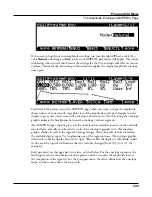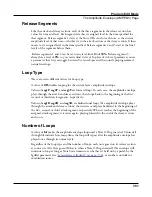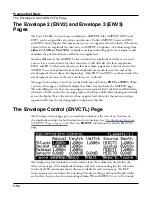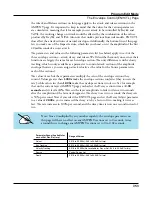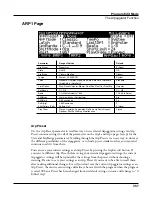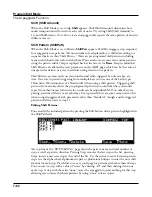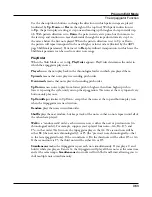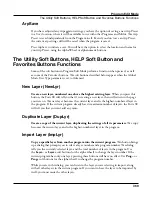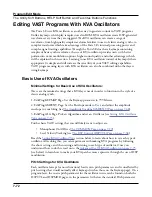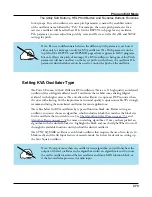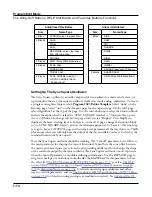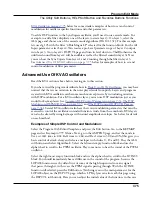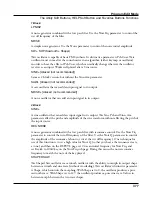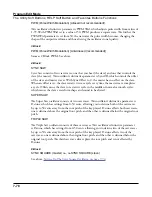
Program Edit Mode
The Arpeggiator Function
7-63
Use the chan up/down buttons to change the direction in which pattern steps are played
(indicated by Up, Down, or Flat on the right of the top line.) With pattern direction set
to Up, the pattern plays starting at step one and moving up through each step towards step
48. With pattern direction set to Down, the pattern starts at step one, but then moves to
the last step and continues to move backwards through the steps down towards step 1 in
the octave below the first note played. When the pattern direction is set to Up or Down,
the pattern will repeat transposed in the next higher or lower octave (limited by the ARP1
page ShiftLimit parameter). Patterns set to Flat play without transposition, in which case the
ShiftLimit parameter can be used to restrict note range.
PlayOrder
When the Shift Mode is set to Alg, PlayOrder appears. PlayOrder determines the order in
which the arpeggiator plays notes.
Played
causes them to play back in the chronological order in which you played them.
Upwards
means that notes play in ascending pitch order.
Downwards
means that notes play in descending pitch order.
UpDown
causes notes to play from lowest pitch to highest, then from highest pitch to
lowest, repeating the cycle until you stop the arpeggiation. The notes at the very top and very
bottom only play once.
UpDownRep
is similar to UpDown, except that the notes at the top and bottom play twice
when the Arpeggiator reverses direction.
Random
plays the notes in random order.
Shuffle
plays them at random, but keeps track of the notes so that no note repeats until all of
the others have played.
Walk
is a “random walk” order: each successive note is either the next or previous note (in
chronological order). For example, suppose you’ve played four notes—G4, B4, D5, and
F5—in that order. The first note the Arpeggiator plays is the G4. The second note will be
either B4 (the next note chronologically), or F5 (the “previous” note chronologically—that
is, the last arpeggiated note). If the second note is B4, the third note will be either D5 or G4.
If the second note is F5, the third note will be either G4 or D5.
Simultaneous
makes the Arpeggiator repeat each note simultaneously. If you play a C and
hold it while you play an E and a G, the Arpeggiator will play all three notes at the same time
and at the same tempo. Simultaneous also works well with Shift and Limit, allowing you to
shift multiple notes simultaneously.

